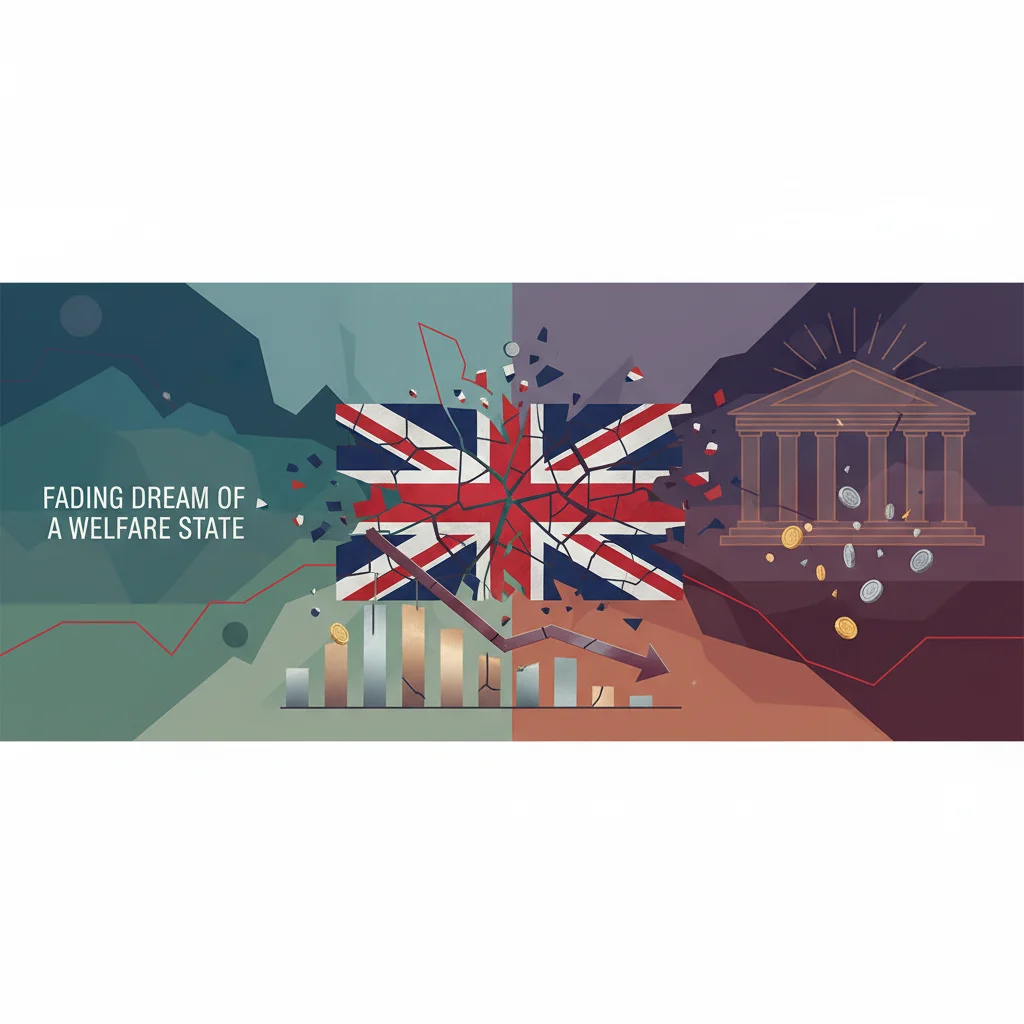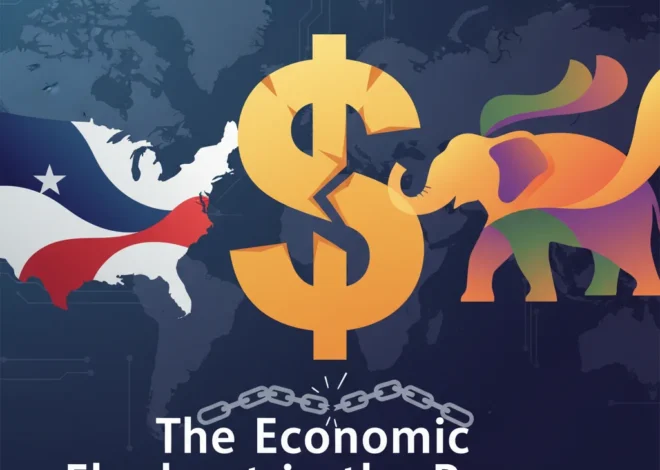
The Broken Promise: Why the UK’s Post-War Economic Blueprint is Failing and What It Means for Investors
The Fading Dream of a Welfare State
For over 70 years, the United Kingdom’s welfare state, built on the principles of the landmark Beveridge Report, has been a cornerstone of its national identity. The promise was simple yet profound: a social safety net stretching from “cradle to grave,” protecting every citizen from the great evils of “Want, Disease, Ignorance, Squalor, and Idleness.” This social contract was funded by a “fiscal contract”—the implicit agreement that citizens and businesses would pay their taxes in return for robust public services. But today, that contract is fraying at the seams.
In a recent letter to the Financial Times, academics Christopher Adam and Irem Güçeri from the University of Oxford highlight a stark reality: the Beveridge blueprint is buckling under the immense pressure of 21st-century economics. The delicate balance between public spending demands and a sustainable tax base is dangerously off-kilter. This isn’t just a political debate; it’s a structural crisis with profound implications for the UK economy, the stock market, and every investor with a stake in the nation’s future.
The core of the problem is a fundamental mismatch between the world Beveridge planned for and the one we inhabit today. The post-war consensus was built on a foundation of rapid economic growth, a young and growing population, and a relatively simple, domestic-focused economy. That foundation has crumbled, replaced by demographic headwinds, technological disruption, and the complexities of a globalized financial system.
From Five Giants to Modern Menaces
To understand why the system is failing, we must first appreciate the world it was designed to fix. Sir William Beveridge’s 1942 report was a revolutionary document, a blueprint for a post-war society that would care for its own. It identified five “Giant Evils” to be slain by a comprehensive system of social insurance. However, these giants have evolved into more complex and costly modern forms.
The table below illustrates the shift from Beveridge’s original challenges to the multifaceted crises facing the UK economy today.
| Beveridge’s Original “Giant Evil” (1942) | The 21st Century Equivalent | Economic & Financial Impact |
|---|---|---|
| Want (Poverty) | The Cost of Living Crisis & Wealth Inequality | Suppressed consumer demand, increased reliance on state benefits, and social unrest impacting market stability. |
| Disease (Poor Healthcare) | Chronic Illness & an Aging Population | Exponentially rising healthcare and social care costs, consuming an ever-larger share of the national budget. |
| Ignorance (Lack of Education) | The Digital Skills Gap & Lifelong Learning Deficit | Reduced productivity, lower international competitiveness, and structural unemployment in a tech-driven economy. |
| Squalor (Poor Housing) | The Housing & Affordability Crisis | Reduced labor mobility, diversion of capital into unproductive assets, and a drag on household wealth creation. |
| Idleness (Unemployment) | Underemployment, Automation & The Gig Economy | Erosion of the traditional tax base (National Insurance), job precarity, and stagnant wage growth. |
This evolution reveals the core challenge. The original system was designed to provide acute support for temporary problems like unemployment or sickness. Today’s system is burdened with providing chronic, long-term, and increasingly expensive support for an aging population and a transformed economy. According to the Office for National Statistics, the proportion of the UK population aged 65 and over is projected to increase from 18.6% in 2021 to 23.9% by 2046, placing immense strain on pensions and the NHS.
Beyond the Click: How AI in Advertising is Reshaping the Economy and Your Investment Portfolio
The Investor’s Dilemma: Navigating a Fraying Fiscal Contract
This structural crisis is not an abstract problem for economists and politicians. It creates powerful headwinds and cross-currents that directly impact the world of finance, trading, and investing. For business leaders and finance professionals, understanding these dynamics is crucial for risk management and identifying new opportunities.
1. The Impact on the Broader Economy
The tension between spending and revenue creates a toxic economic cocktail. To plug the gap, governments must either raise taxes, cut spending, or borrow more. All options have negative consequences.
- Higher Taxes: Increased corporation tax or income tax can stifle business investment, reduce consumer spending, and make the UK a less attractive place for global talent and capital.
- Austerity: Deep cuts to public services and investment can harm long-term productivity, infrastructure, and human capital, leading to a slower-growing economy.
- Increased Borrowing: Persistent budget deficits lead to a rising national debt. As the Office for Budget Responsibility frequently warns, an unsustainable debt trajectory makes the country vulnerable to market shocks, risks higher interest rates, and can trigger currency crises—as seen during the 2022 “mini-budget” turmoil.
This environment of uncertainty and low growth potential acts as a drag on the entire stock market and the wider financial ecosystem.
Beyond the Tariff Talk: Deconstructing the New US Trade Deals and Their Ripple Effect on the Economy
2. Sector-Specific Risks and Opportunities
Investors must look beyond the macro picture to see how this plays out in specific sectors. For example, companies in the healthcare, pharmaceuticals, and social care sectors may seem like a safe bet due to guaranteed government spending. However, they also face immense pressure to control costs, navigate complex procurement processes, and are subject to the whims of political budgeting. Conversely, sectors that can provide solutions—such as financial technology for more efficient public sector payments, EdTech for reskilling the workforce, or Green Tech for infrastructure renewal—may find new avenues for growth.
3. The Future of UK Gilts and Sterling
For decades, UK government bonds (gilts) have been considered a cornerstone of safe-haven investing. However, a deteriorating fiscal position erodes this status. If markets begin to doubt the UK’s ability to manage its finances, demand for gilts could fall, forcing the government to offer higher interest rates to attract buyers. This would increase the cost of borrowing for the entire economy, impacting everything from mortgage rates to business loans. The stability of the pound sterling is also at risk, as international investors may lose confidence in the UK’s long-term economic stewardship.
Ghosts of Economic Past: Why a 1970s Socialist Blueprint Still Haunts Modern Finance
Forging a New Contract for a New Century
Escaping this fiscal trap requires more than just tinkering with tax rates. It demands a fundamental reimagining of the relationship between the citizen, the state, and the economy. The solutions are politically difficult but economically necessary.
First, a radical simplification and modernization of the tax system is overdue. The current system is ill-equipped for a world of digital nomads, multinational tech giants, and decentralized finance. A serious discussion is needed about shifting the tax burden away from mobile labor and capital towards immobile assets like land, or exploring new models like carbon taxes that align revenue generation with broader societal goals.
Second, we must aggressively leverage technology. The banking and finance sectors have been transformed by financial technology; the public sector remains decades behind. There is enormous potential for AI, data analytics, and even blockchain to create more efficient, transparent, and user-centric public services, delivering better outcomes for a lower cost. This could be the biggest productivity revolution the state has ever seen.
Finally, a new national conversation is needed. What are the core functions we expect from the state in the 21st century? Is the universal, “cradle to grave” model still viable, or do we need a more targeted system that focuses resources on those most in need? This requires moving beyond partisan soundbites and engaging in an honest debate about the trade-offs we are willing to accept for a sustainable future.
The Beveridge blueprint gave a shattered nation hope and a framework for prosperity that lasted for generations. That framework is now broken. The challenge for today’s leaders, investors, and citizens is to find the courage to design a new one—a new fiscal contract fit for the complexities of the modern global economy.


